Tuba Facts
10 Interesting Facts about Tubas
The Tuba is a young contender in the world of Orchestras.
In 1835 this bassy instrument was introduced by Germans Johann Gottfried Moritz and Wilhelm Friedrich Wieprecht. Since its introduction most orchestras have at least one Tuba, giving the weighty low-end of the brass section.
Its size is quite breathtaking, particularly compared to other brass instruments.


1. Weight Watchers
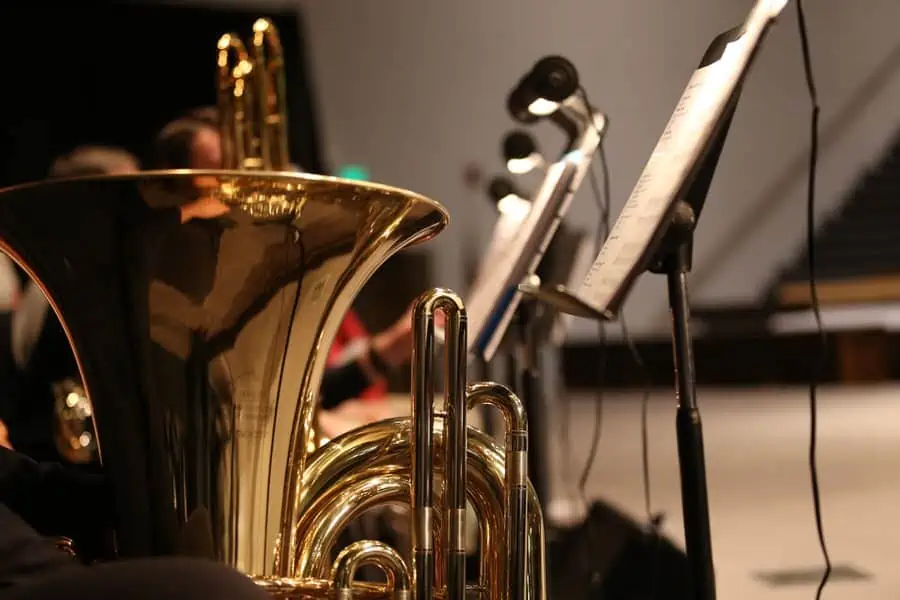
The Tuba weighs just under 14 kilograms. This is enormous compared to other brass instruments and in classical music players must rest it on their laps in a seated position.
Marching bands, American ones especially, are relatively flamboyant in comparison, with multiple players standing and parading. From this setup there’s a rich archive of beautiful Tuba fails online. Perhaps watch, laugh, then loudly applaud for the great effort displayed.
2. Low Brow
As we’ve mentioned, Tubas are the lowest frequency instrument in the brass section (mega-bass!). They replaced the previous contender the ophicleide.
Standing next to a Tuba in full flow is quite impressive, as the human body reacts more strongly to the resonance of bass. This is particularly so in the next section.
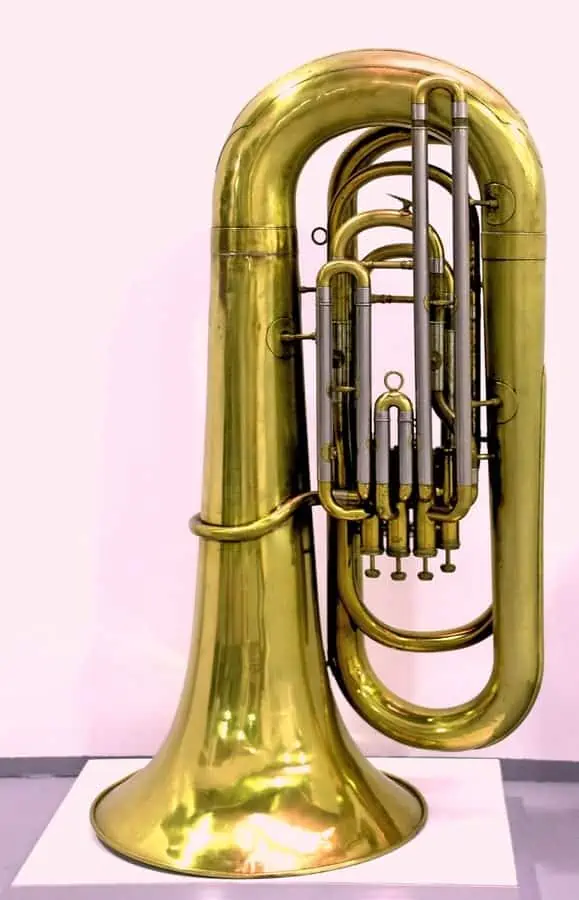
3. Titanic Tuba
Many giant versions of the Tuba exist, some being several metres in height. The notes they produce clearly require more effort to achieve and are in some cases so bassy they become inaudible.
Players often stand beside the Tuba with another person in support and play with the bell facing upwards. The bell can be as wide as a metre. Quirky and impressive!
4. Red Face With No Disgrace
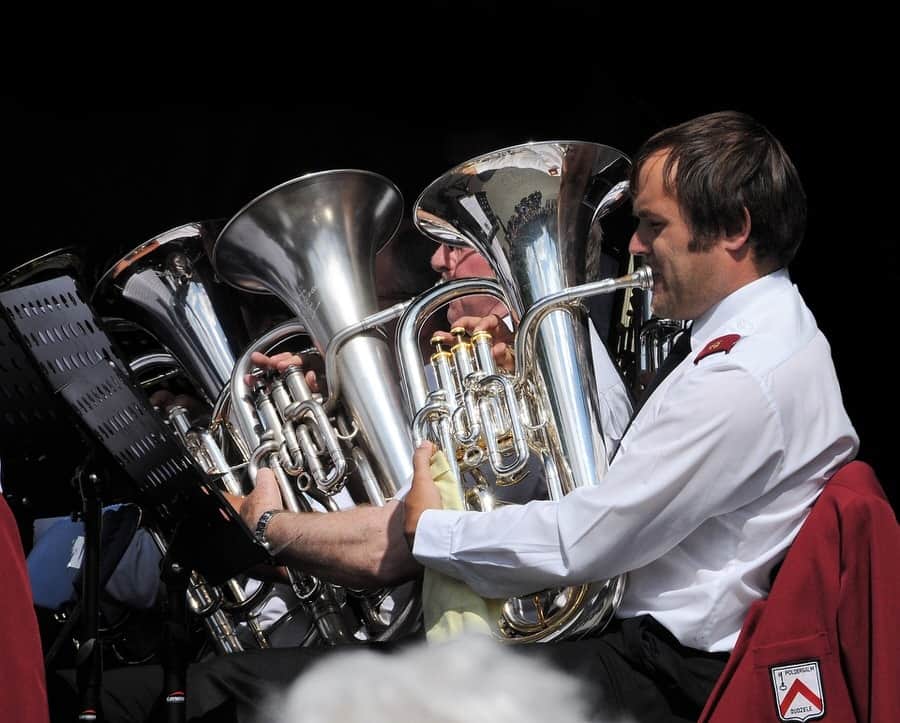
Tubas have between three and six valves, large bells and a beautiful composition of tubes. As already expressed, it takes huge effort to sound them. That and red puffy cheeks.
5. Tuba Glue
Most marching band Tubas are designed to be more carryable, compared to those found in an orchestra. Many have a changeable mouthpiece to alter between the two modes.
Tubas with forward facing bells are specifically designed for ease of recording.
6. Tuba In The Rain
Very similar in tonal range to the Double Bass, the ‘contrabass’ is the most popular Tuba.
Back in the day many jazz bands alternated from the double bass to the Tuba, given their better performance in damp street performing conditions.
7. The Throne Of Tuba
One of the most renowned Tuba players in the 20th century was the American Arnold Jacobs.
He was a multi-instrumentalist in the brass category but was specifically honoured for his work in Tuba.
After his death in 1998 he was awarded for his contribution by the Chicago Symphony Orchestra who dedicated their Tuba chair to him.
8. A Big Tub’a Money
Most brands offer a version of the Tuba reduced in size, for smaller or younger players.
For beginners it’s possible to find a student Tuba for around $800-900 (£700-800), including plastic models which are much lighter and so easier for youngsters to hold.
Given the size of this musical marvel, be prepared to pay in excess of $1,300 (£1,000) as a standard price. Also, it doesn’t take any research skills to find Tubas priced over the \$10,000 (£8,000) mark.
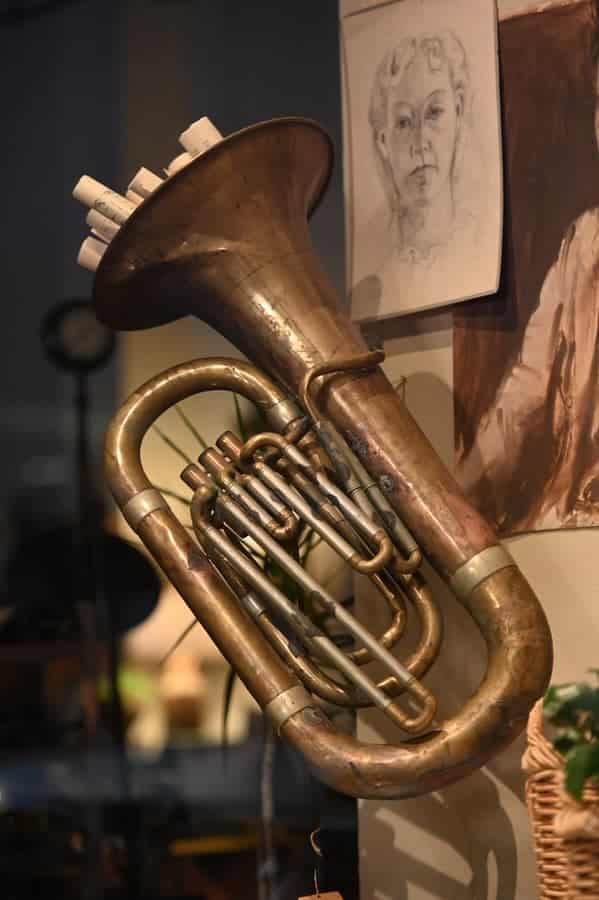
9. Stewie
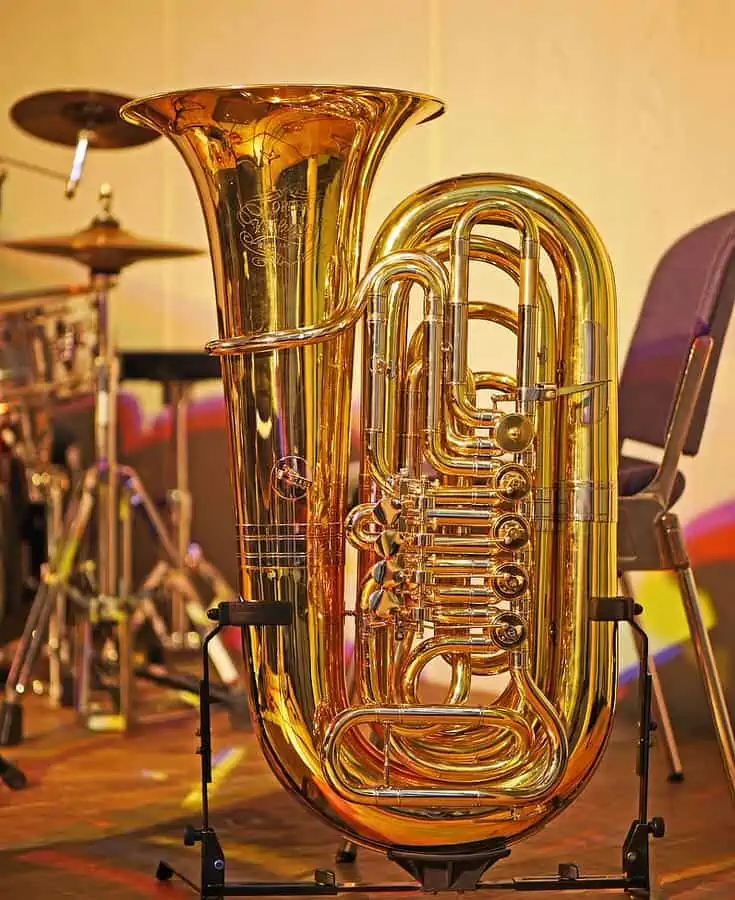
Similar to its brass cousin the Trombone, the Tuba can be used to musically describe areas of human life. Specifically, the Tuba is used to describe the walking movements of someone very overweight.
The writer of this section would like to confess that he has more body weight than he would like, but still finds this concept funny and fascinating. Very few creatures can use music to describe life as we do.
10. 11,690 Kilograms Of Tuba
In 2018 the Kansas City Symphony broke the Guinness World Record for most Tubas playing at once. The previous record was 504 Tubas, playing for 5 minutes. The group from Kansas smashed it with 835 players all at once!
That's the end of our Tuba Facts... So what now?
About the Author
Carl Woodcroft
Carl has performed with orchestras including the Orchestra of the Royal Opera House, Covent Garden. He has recorded with Bastille at Abbey Road Studios, played at Glastonbury and the BBC Proms. Carl studied at the Royal Academy of Music and has also performed for The Queen. Interestingly, he has appeared in film and TV as a musician in The Ipcress File remake, Military Wives and Mission: Impossible – Rogue Nation. Carl teaches at Royal Holloway University, Highgate School, Surrey Arts and as a visiting guest at Junior Guildhall.
Other posts by this author
Who Can Supply You With The Best Advice?
We can; look no further! The Founder of Ted’s List, Robert Emery, has a hectic career as an international conductor, record producer and pianist. Our goal isn’t to sell you high-priced programs that you’ll never take advantage of. Our aim is to assist you. Just like Robert wanted to guide his son, Teddy, by obtaining trustworthy tips from associates who happen to be world-class professional musicians.
Shocking basic fact coming up: I bet you didn’t know that there is basically no obligation for your instrumental teacher to have been professionally trained. But surely they need some kind of certification in order to take people’s hard earned cash? Nope. If you wished to, you could turn around tomorrow and call yourself a music teacher! Crazy isn’t it…
You wouldn’t believe the amount of tuba teachers who confuse a tuba and sousaphone! And because of this madness, we try to be a safe and secure pair of hands – shedding light with trustworthy, well researched reviews and information from fully trained, outstanding expert musicians. A few of whom you’ll even recognise; or even seen in live concert!
Get the 4 Things That I Feature…
Every Friday, I send a special email with all the four most awesome things I’ve reviewed or used that week.
The email message really could be about anything; books, music, tracks, cool gadgets, training tips – as long as it’s pleasurable and interesting and fantastic, it’ll end up on the e mail!
Only accessible for anybody who is a subscriber to the newsletter.
Read the next post in this series:




